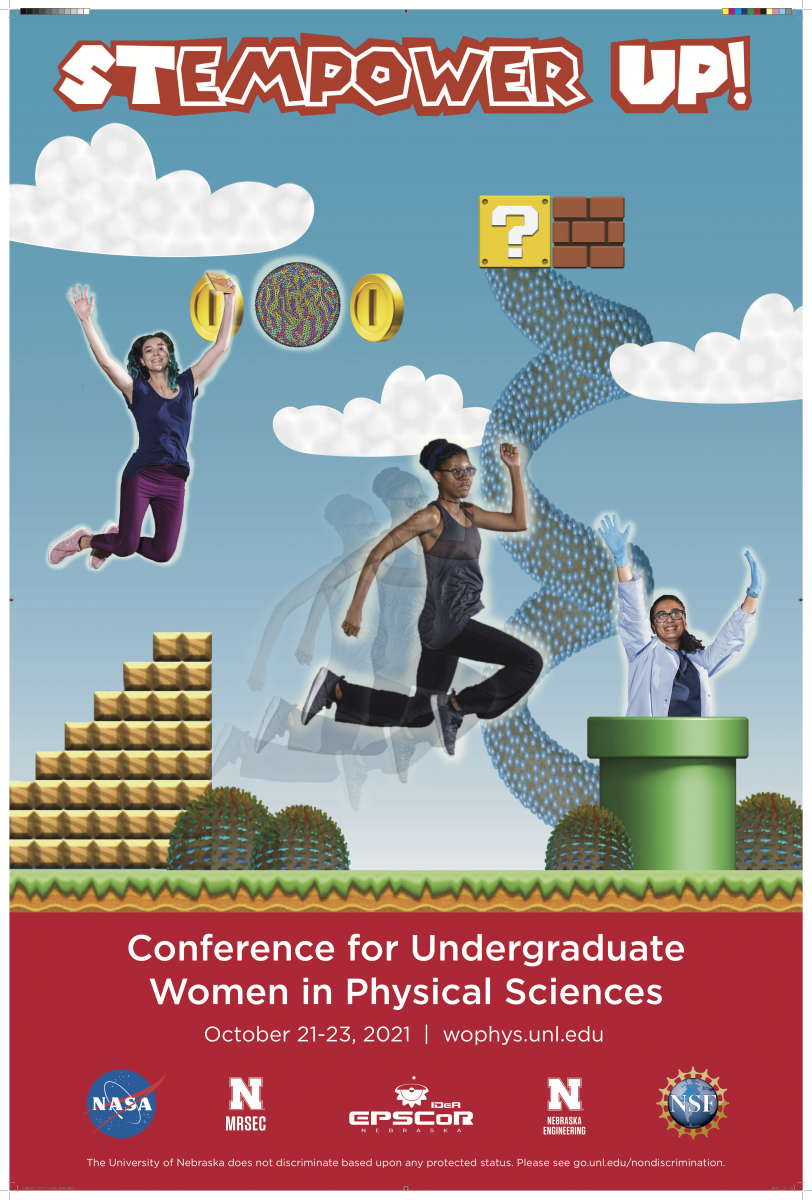QSEC undergraduate student Swan Klein will give an invited presentation on “Two-Qubit Quantum Circuit Synthesis” in the WoPhyS 2021 on Thursday, October 21., The presented research is a part of NSF funded project on quantum algorithms co-advised by QSEC members Dr. Mingzhen Tian and Dr. Michael Jarret. Dr. Maria Emelianenko, the Chair of the Department of Mathematical Sciences and the Associate Director of the QSEC, will also give a keynote address at the conference on her research in materials and quantum circuits.
WoPhyS 2021 is the 12th Annual Conference of the serial conference held by the University of Nebraska– Lincoln (UNL) affiliated materials science centers. It brings together outstanding women researchers in the physical sciences, along with their supervising faculty, for a three-day conference covering research topics in STEM areas. The purpose of this meeting is to provide a platform for students to expand upon their current research activities by presenting their projects and results to their peers. The conference will also provide opportunities for participants to share their experiences and interests with other students, as well as visit with faculty from UNL and other U.S. universities about graduate school preparation and career planning. The conference is co-sponsored by NSF-funded MRSEC, Nebraska EPSCoR, and the Nebraska Center for Materials and Nanoscience. This conference is expected to play a significant role in preparing young women and men for successful careers in science and is primarily intended for research-active women undergraduates from across the U.S., as well as their faculty.
Below is the abstract of the presentation.
Abstract: Every single-qubit Clifford+T operator can be uniquely written in a T-count minimal normal form circuit. Furthermore, a linear-time algorithm exists for computing the normal form of every Clifford+T operator. Our goal is to find a normal form for the two-qubit Clifford+T gate set using the SO(6) representation of the Clifford+T operators. It is desirable to represent circuits using as few T gates as possible as it is more computationally expensive to use T gates than Clifford gates. We intend to use the results of an algorithm we wrote to exhaustively compute the patterns of Clifford+T circuits with up to 10 T gates to give us insight into developing a normal form and exact synthesis algorithm, which would aid in the efficient implementation of quantum algorithms.
For more information, please visit the WoPhyS 2021 Conference or contact QSEC ([email protected]).

